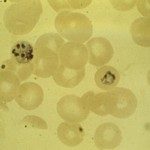Link to Pubmed [PMID] – 38517396
Link to DOI – 10.18632/aging.205676
Aging (Albany NY) 2024 Mar; 16():
Acute kidney injury (AKI) is associated with immune cell activation and inflammation. However, the putative pathogenic mechanisms of this injury have not been thoroughly investigated. Natural killer (NK) cells play an important role in immune regulation; however, whether NK cells regulate AKI remains unclear. Cordyceps sinensis (CS), a modern Chinese patented medicine preparation, has been widely used in treating patients with chronic kidney disease (CKD) owing to its anti-inflammatory effects and maintenance of immune homeostasis. Whether 2′-deoxyadenosine, a major active component in CS, can ameliorate renal AKI by regulating immunity, particularly in NK cells, has not been reported. This study is the first to demonstrate how NK cells promote AKI by releasing perforin, interferon-gamma (IFN-γ) and other inflammatory factors in vivo and in vitro. Differential gene expression between AKI and normal tissues was assessed using bioinformatic analyses. Quantitative real-time PCR, western blotting, and immunohistochemical staining were used to detect target protein mRNA and protein expression. Levels of inflammatory factors were measured using enzyme-linked immunosorbent assay. We found the high doses of the 2′-deoxyadenosine treatment significantly alleviated FA-induced renal damage in vivo, and alleviated the NK cells of renal injury by activating the STING/IRF3 pathway to inhibit perforin release in vitro. The results showed that 2′-deoxyadenosine could mitigate AKI by downregulating the activity of NK cells (by decreasing the expressions of perforin and IFN-γ) and inhibiting the stimulator of interferon genes and phosphorylated IFN regulatory factor 3. This may provide valuable evidence supporting the clinical use of CS in treating patients with AKI.

